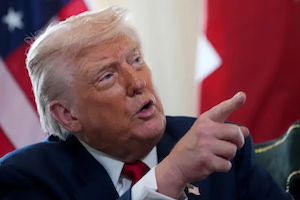Trump’s Tariff Policy Hit Again as Federal Appeals Court Rules It Illegal

On August 30, the U.S. Federal Court of Appeals, in a 7–4 ruling, declared several broad tariff orders issued by President Trump under the 1977 International Emergency Economic Powers Act (IEEPA) unlawful and invalid. The court held that the IEEPA does not explicitly grant the president authority to impose tariffs, and that such measures bypassed the legislative process and lacked clear congressional authorization. While the ruling upheld the lower court’s decision, the appellate court allowed the tariff measures to remain in effect until October 14, pending a possible appeal to the Supreme Court.
The court emphasized that although the IEEPA grants the president authority to regulate international transactions during specific emergencies, it does not extend to taxation or tariff powers, which traditionally require congressional approval. Judges noted that Trump’s “sweeping and boundless” measures clearly exceeded the scope of the law. However, tariffs imposed under other statutes—such as the steel and aluminum tariffs established under Section 232 of the 1962 Trade Expansion Act—remain valid.
Trump blasted the ruling on social media as a “national disaster,” accusing the judiciary of deep bias. He vowed to fight all the way to the Supreme Court, writing that “all tariffs remain legal, and only the Supreme Court can return these weapons to us.” He warned that losing these tariffs would deal a major blow to American workers and businesses. The White House and the Department of Justice confirmed they would immediately appeal to the Supreme Court and may consider relying on the 1974 Trade Act as a legal basis for future tariffs. Meanwhile, Congress has already introduced the 2025 Trade Review Act, a bill that would require the president to notify Congress of any new tariffs and obtain legislative approval within 60 days, or else the measures would lapse.
Since tariff revenues are an important source of federal income—totaling $28 billion in July 2025 alone—economists warn that repealing these measures could create a revenue gap, forcing the government to issue more debt and potentially altering Federal Reserve monetary policy. Others argue that the ruling restores proper constitutional balance, reduces the risk of executive overreach, and realigns trade policy with institutional norms. Businesses, however, face mounting uncertainty that could ripple across the broader economy.
Analysts note that the ruling not only strikes at the core of Trump’s tariff-driven trade war but also reignites a constitutional debate over the balance of power between Congress and the executive branch. If the Supreme Court ultimately upholds the decision, the U.S. government could face profound legal and economic challenges. At the same time, congressional action will be closely watched. With Republicans holding the majority, lawmakers may pursue legislation to reestablish greater structure and transparency in trade policymaking.
Overall, this legal and political battle will determine not only whether Trump’s economic strategy can remain in effect, but also how the future boundaries of U.S. executive power and institutional design will be defined.
- 44 reads
Human Rights
Fostering a More Humane World: The 28th Eurasian Economic Summi

Conscience, Hope, and Action: Keys to Global Peace and Sustainability

Ringing FOWPAL’s Peace Bell for the World:Nobel Peace Prize Laureates’ Visions and Actions

Protecting the World’s Cultural Diversity for a Sustainable Future

Puppet Show I International Friendship Day 2020

